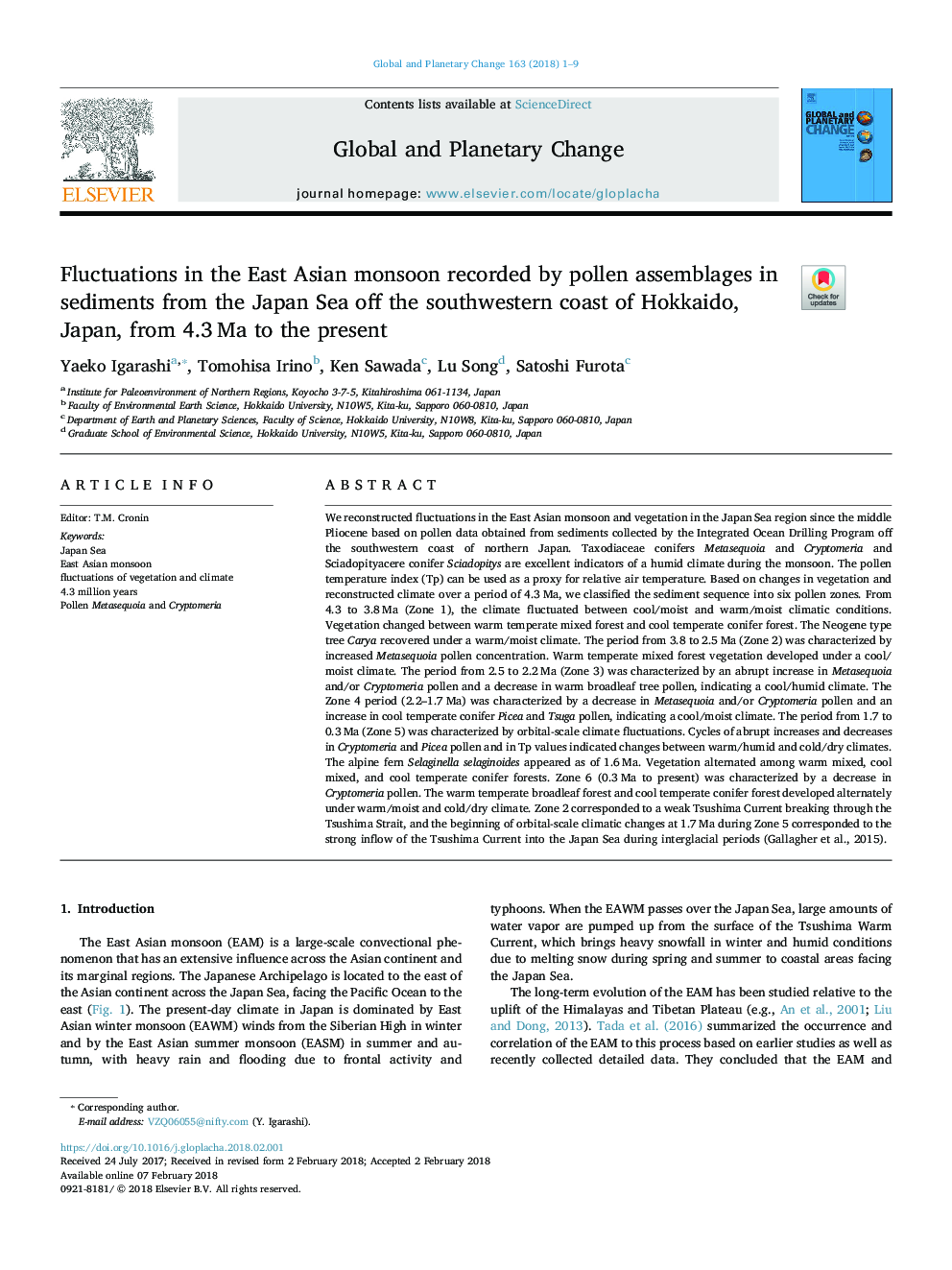| Article ID | Journal | Published Year | Pages | File Type |
|---|---|---|---|---|
| 8867528 | Global and Planetary Change | 2018 | 9 Pages |
Abstract
We reconstructed fluctuations in the East Asian monsoon and vegetation in the Japan Sea region since the middle Pliocene based on pollen data obtained from sediments collected by the Integrated Ocean Drilling Program off the southwestern coast of northern Japan. Taxodiaceae conifers Metasequoia and Cryptomeria and Sciadopityacere conifer Sciadopitys are excellent indicators of a humid climate during the monsoon. The pollen temperature index (Tp) can be used as a proxy for relative air temperature. Based on changes in vegetation and reconstructed climate over a period of 4.3â¯Ma, we classified the sediment sequence into six pollen zones. From 4.3 to 3.8â¯Ma (Zone 1), the climate fluctuated between cool/moist and warm/moist climatic conditions. Vegetation changed between warm temperate mixed forest and cool temperate conifer forest. The Neogene type tree Carya recovered under a warm/moist climate. The period from 3.8 to 2.5â¯Ma (Zone 2) was characterized by increased Metasequoia pollen concentration. Warm temperate mixed forest vegetation developed under a cool/moist climate. The period from 2.5 to 2.2â¯Ma (Zone 3) was characterized by an abrupt increase in Metasequoia and/or Cryptomeria pollen and a decrease in warm broadleaf tree pollen, indicating a cool/humid climate. The Zone 4 period (2.2-1.7â¯Ma) was characterized by a decrease in Metasequoia and/or Cryptomeria pollen and an increase in cool temperate conifer Picea and Tsuga pollen, indicating a cool/moist climate. The period from 1.7 to 0.3â¯Ma (Zone 5) was characterized by orbital-scale climate fluctuations. Cycles of abrupt increases and decreases in Cryptomeria and Picea pollen and in Tp values indicated changes between warm/humid and cold/dry climates. The alpine fern Selaginella selaginoides appeared as of 1.6â¯Ma. Vegetation alternated among warm mixed, cool mixed, and cool temperate conifer forests. Zone 6 (0.3â¯Ma to present) was characterized by a decrease in Cryptomeria pollen. The warm temperate broadleaf forest and cool temperate conifer forest developed alternately under warm/moist and cold/dry climate. Zone 2 corresponded to a weak Tsushima Current breaking through the Tsushima Strait, and the beginning of orbital-scale climatic changes at 1.7â¯Ma during Zone 5 corresponded to the strong inflow of the Tsushima Current into the Japan Sea during interglacial periods (Gallagher et al., 2015).
Keywords
Related Topics
Physical Sciences and Engineering
Earth and Planetary Sciences
Earth-Surface Processes
Authors
Yaeko Igarashi, Tomohisa Irino, Ken Sawada, Lu Song, Satoshi Furota,
